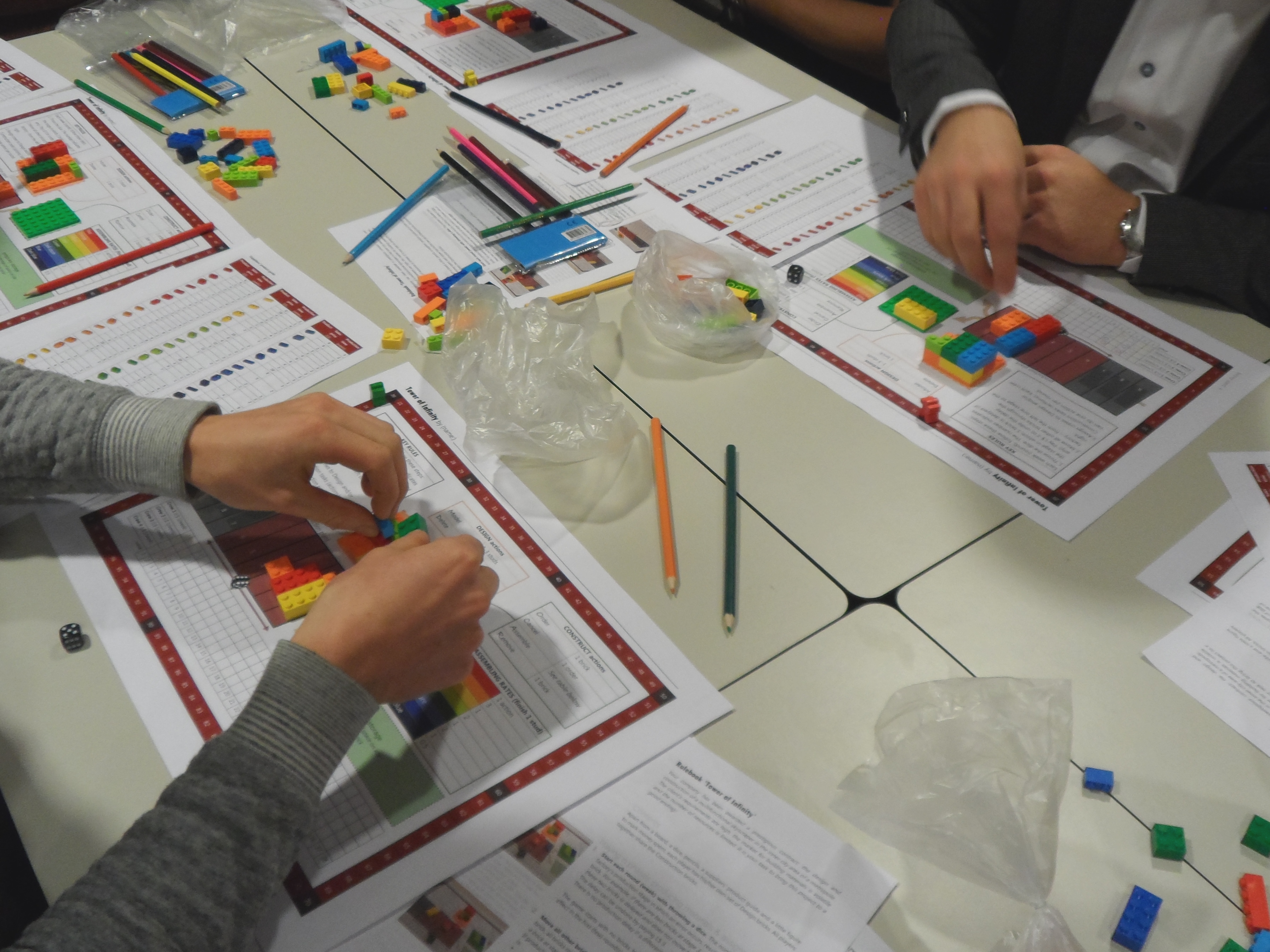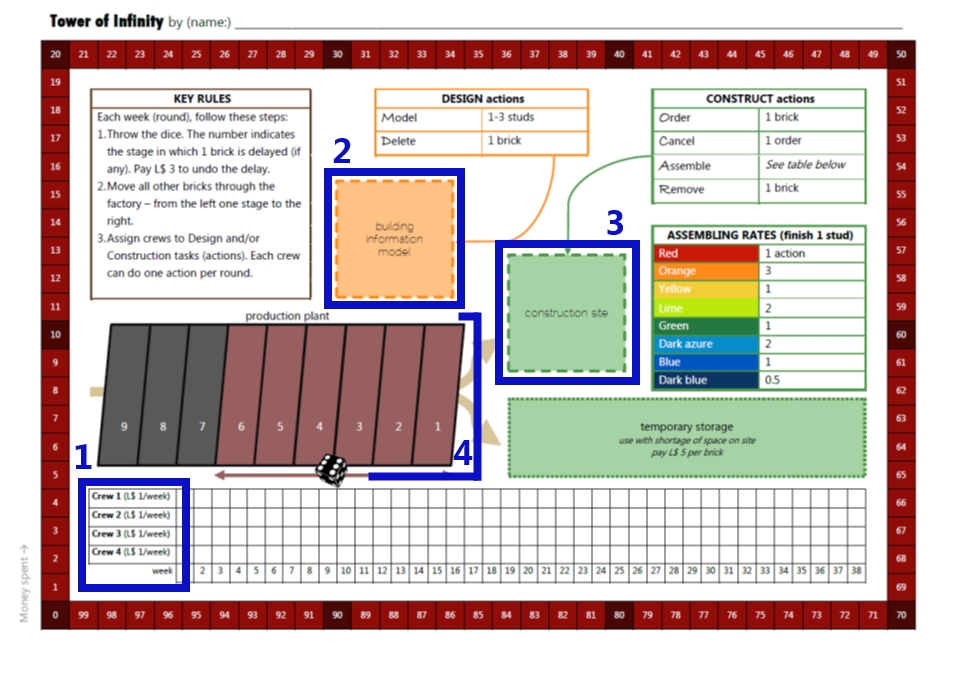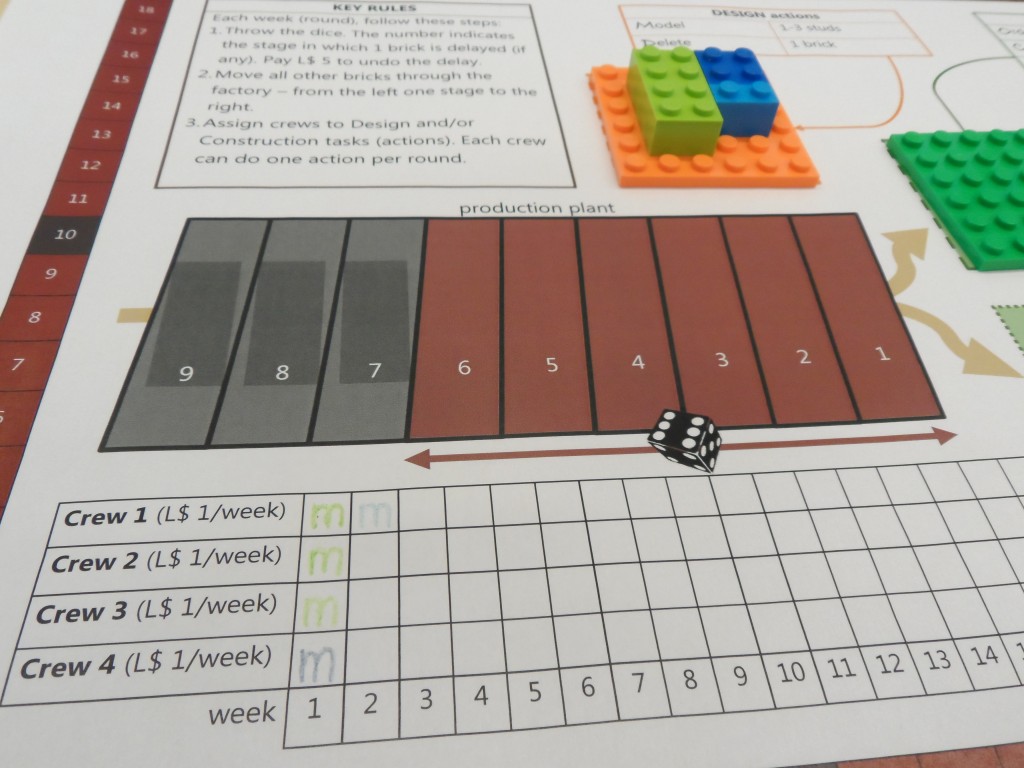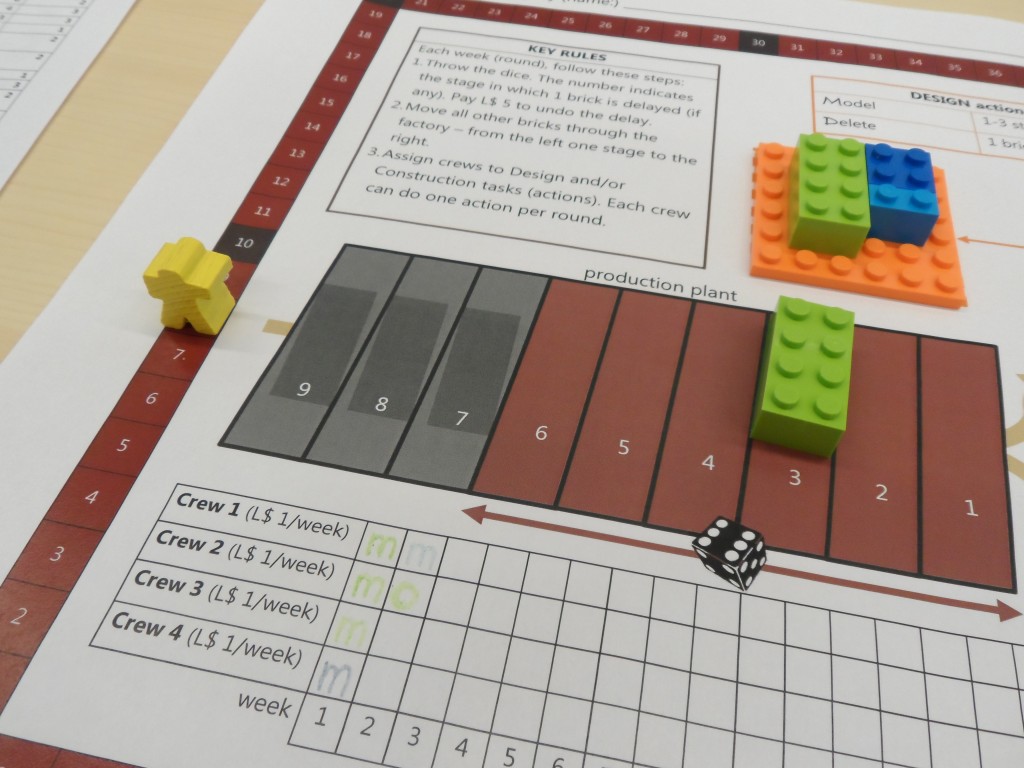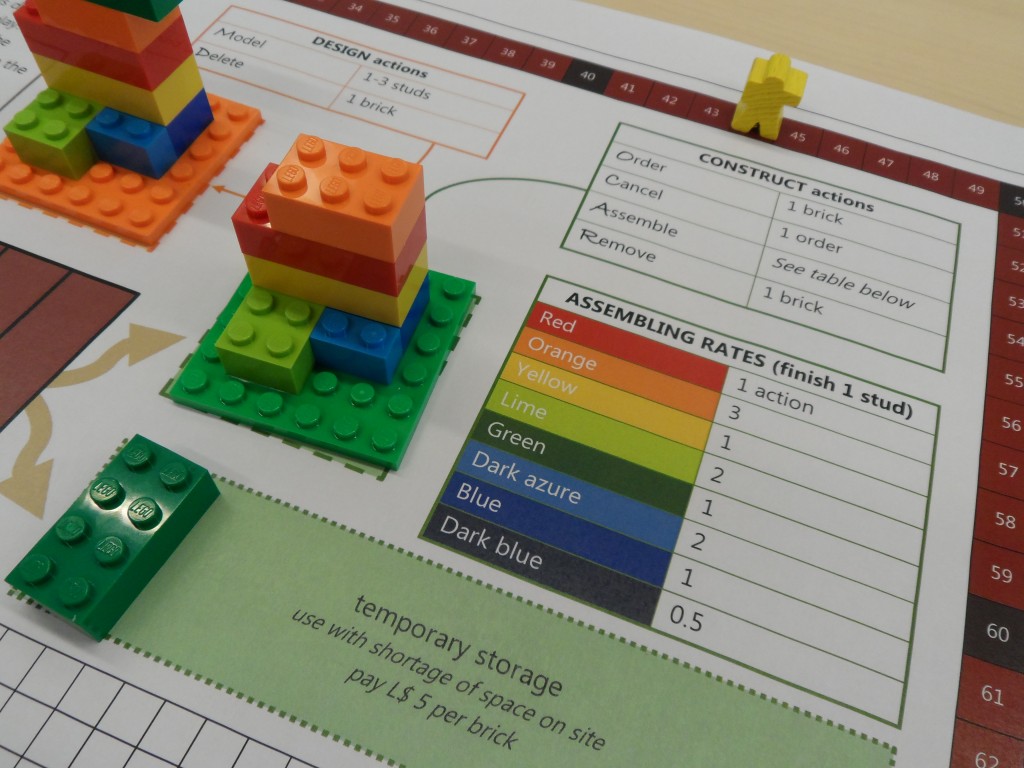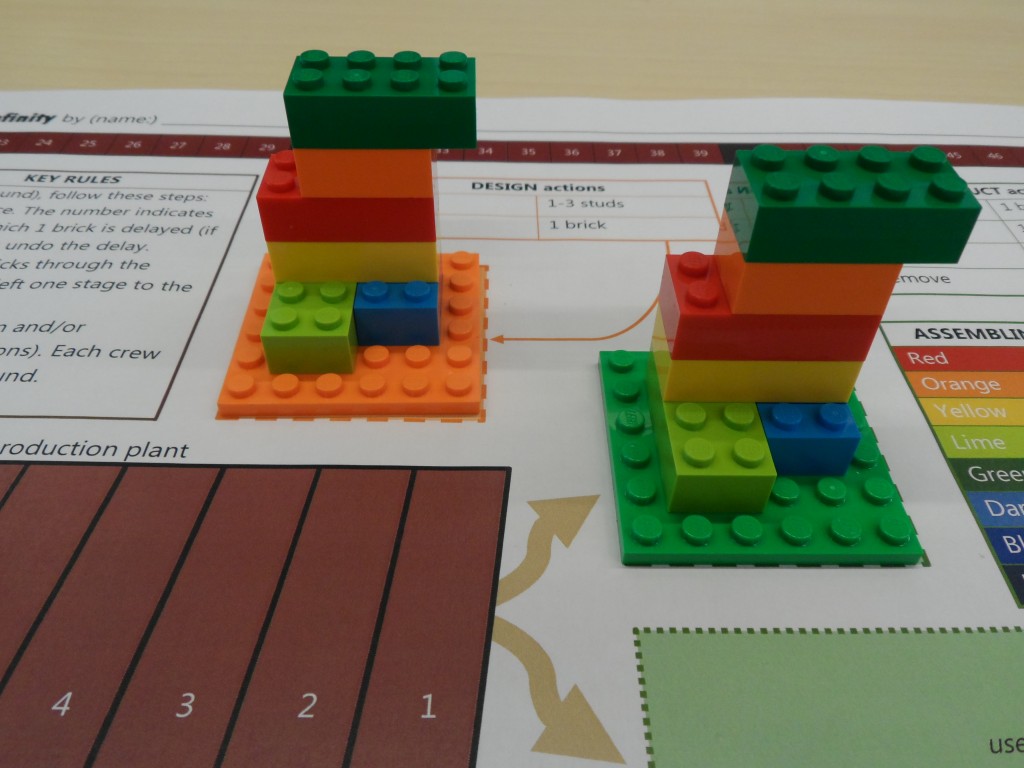Your company has been awarded a prestigious contract: the design and construction of a multifunctional skyscraper in the inner city area of a metropole. The client’s requirements are high, the market for building materials is volatile and the number of resources is limited. It is your task to bring this project to a good ending!
This is the setting of a serious game that I have been developing over the past few months. In this one-player board game, called Tower of Infinity, players take on the role of a main contractor responsible for designing and constructing a multifunctional skyscraper. They are challenged to deliver this tower according to a set of client requirements and do so by assigning their four crews to Modeling, Ordering or Assembling tasks each week. The client pays a fixed sum to the main contractor and thus players may make a higher profit if they minimize waste and avoid unnecessary costs. Uncertain deliveries of building materials and a lack of space on the construction site complicate practice even more. This blog post gives an idea of how the game works!
First, let’s have a look at the play board. Part (1) shows that there are four crews available each week. These four crews can use the building information model to perform design actions (2) and, based on that model, construct the actual building (3). The contractor is dependent on suppliers producing (4) building materials – represented by LEGO bricks.
The four crews available are key to get all the work done. The player may assign them, for example, to Model part of the building. That happens by writing a letter M in the time schedule – using pencils with colors corresponding to the relevant bricks:
Once part of the design is finished, the crews can be assigned to Ordering bricks. For each brick, the player then needs to make a trade-off between production costs and lead times to select one of the offers made by the suppliers. Here, a 4×2 lime brick is chosen with a cost of L$ 8 and a lead time of 3 weeks:
Producing building materials is subject to some risk. Therefore, players throw a dice at the start of each week. When the number thrown by the dice equals the production stage, the brick in that stage is delayed. Here, the 2×2 red brick in stage 3 is delayed and does not move to the next stage on the right:
When production in the factory is finished, bricks are transported to the construction site. Players can then start with on-site assembling. The time to assemble a particular LEGO brick depends on its color. If crews cannot start assembling a brick immediately and there is also not enough space to store that brick, it first needs to be stored elsewhere in the city. Here, the orange brick is being assembled and the green brick moves to a temporary storage as it cannot be stored on the site:
The project is finished when the building meets the design requirements set by the client. The player then has two identical LEGO towers, one representing the building information model (as-built) and one representing the actual building. The player’s performance can be determined by comparing the project outcomes (money spent, number of weeks working and height of the tower) with previously established indicators. The board may then look something like this:
The game has already been played by students of the course Supply Chain Management & ICT at our university and (earlier, in a different version) by a delegation of AEC educational experts, primarily from Egypt. I will write about these plays in upcoming blog posts.
